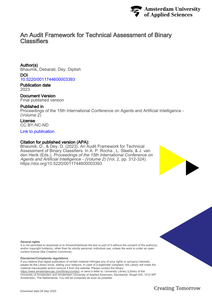The sensitivity of tropical forest carbon to climate is a key uncertainty in predicting global climate change. Although short-term drying and warming are known to affect forests, it is unknown if such effects translate into long-term responses. Here, we analyze 590 permanent plots measured across the tropics to derive the equilibrium climate controls on forest carbon. Maximum temperature is the most important predictor of aboveground biomass (−9.1 megagrams of carbon per hectare per degree Celsius), primarily by reducing woody productivity, and has a greater impact per °C in the hottest forests (>32.2°C). Our results nevertheless reveal greater thermal resilience than observations of short-term variation imply. To realize the long-term climate adaptation potential of tropical forests requires both protecting them and stabilizing Earth’s climate.
DOCUMENT

The carbon sink capacity of tropical forests is substantially affected by tree mortality. However, the main drivers of tropical tree death remain largely unknown. Here we present a pan-Amazonian assessment of how and why trees die, analysing over 120,000 trees representing > 3800 species from 189 long-term RAINFOR forest plots. While tree mortality rates vary greatly Amazon-wide, on average trees are as likely to die standing as they are broken or uprooted—modes of death with different ecological consequences. Species-level growth rate is the single most important predictor of tree death in Amazonia, with faster growing species being at higher risk. Within species, however, the slowest-growing trees are at greatest risk while the effect of tree size varies across the basin. In the driest Amazonian region species-level bioclimatic distributional patterns also predict the risk of death, suggesting that these forests are experiencing climatic conditions beyond their adaptative limits.These results provide not only a holistic pan-Amazonian picture of tree death but largescale evidence for the overarching importance of the growth–survival trade-off in driving tropical tree mortality.
DOCUMENT

Het doel van dit onderzoek is te onderzoeken onder welke omstandigheden en onder welke condities relatief moderne modelleringstechnieken zoals support vector machines, neural networks en random forests voordelen zouden kunnen hebben in medisch-wetenschappelijk onderzoek en in de medische praktijk in vergelijking met meer traditionele modelleringstechnieken, zoals lineaire regressie, logistische regressie en Cox regressie.
MULTIFILE

The security of online assessments is a major concern due to widespread cheating. One common form of cheating is impersonation, where students invite unauthorized persons to take assessments on their behalf. Several techniques exist to handle impersonation. Some researchers recommend use of integrity policy, but communicating the policy effectively to the students is a challenge. Others propose authentication methods like, password and fingerprint; they offer initial authentication but are vulnerable thereafter. Face recognition offers post-login authentication but necessitates additional hardware. Keystroke Dynamics (KD) has been used to provide post-login authentication without any additional hardware, but its use is limited to subjective assessment. In this work, we address impersonation in assessments with Multiple Choice Questions (MCQ). Our approach combines two key strategies: reinforcement of integrity policy for prevention, and keystroke-based random authentication for detection of impersonation. To the best of our knowledge, it is the first attempt to use keystroke dynamics for post-login authentication in the context of MCQ. We improve an online quiz tool for the data collection suited to our needs and use feature engineering to address the challenge of high-dimensional keystroke datasets. Using machine learning classifiers, we identify the best-performing model for authenticating the students. The results indicate that the highest accuracy (83%) is achieved by the Isolation Forest classifier. Furthermore, to validate the results, the approach is applied to Carnegie Mellon University (CMU) benchmark dataset, thereby achieving an improved accuracy of 94%. Though we also used mouse dynamics for authentication, but its subpar performance leads us to not consider it for our approach.
DOCUMENT

Almere is a green city where the greenery extends into the centre through a framework of nature, forests, parks and canals. With this green environment, Almere fulfils an important condition for a liveable city, where it is pleasant to live and work. An important goal for the municipality is to challenge its residents to develop a healthy lifestyle by using that green framework.But what really motivates Almeerders to go outside to exercise, enjoy the surroundings and meet each other? Are there sufficient green meeting or sports facilities nearby? Could the routes that connect the living and working environment with the larger parks or forests be better designed? And can those routes simultaneously contribute to climate adaptation?With the Green Escape Challenge, we invited students and young professionals to work on these assignments together.
DOCUMENT

Most beginning food forests face the following challenge: how do we get the harvest to the consumer? At food forest 't Mortelke they had the same question. The following research presents the answer to the following question: 'What are potential outlets for the harvest of Voedselbos 't Mortelke and how can these collaborations be realized?' The research provides more clarity on the needs of the market regarding potential collaborations with Voedselbos 't Mortelke. Interviews with interested parties (restaurants, country stores, organic supermarkets, individuals) revealed that the most appropriate form of cooperation with the food forest lies with fine-dining restaurants in the Eindhoven area. To initiate these collaborations an experimental phase is needed in which the chefs can get to know the products of the food forest. As a result of this research, several collaborations with restaurants have been initiated! Due to privacy reasons, certain parts of the research have been removed from the publication version.
DOCUMENT

Insufficient physical activity presents a significant hazard to overall health, with sedentary lifestyles linked to a variety of health issues. Monitoring physical activity levels allows the recognition of patterns of sedentary behavior and the provision of coaching to meet the recommended physical activity standards. In this paper, we aim to address the problem of reducing the time consuming process of fitting classifiers when generating personalized models for a coaching application. The proposed approach consists of evaluating the effects of clustering participants based on their walking patterns and then recommending a unique model for each group. Each model consists of a random forest classifier with a different number of estimators each. The resulting approach reduces the fitting time considerably while keeping nearly the same classification performance as personalized models.
DOCUMENT
Multilevel models using logistic regression (MLogRM) and random forest models (RFM) are increasingly deployed in industry for the purpose of binary classification. The European Commission’s proposed Artificial Intelligence Act (AIA) necessitates, under certain conditions, that application of such models is fair, transparent, and ethical, which consequently implies technical assessment of these models. This paper proposes and demonstrates an audit framework for technical assessment of RFMs and MLogRMs by focussing on model-, discrimination-, and transparency & explainability-related aspects. To measure these aspects 20 KPIs are proposed, which are paired to a traffic light risk assessment method. An open-source dataset is used to train a RFM and a MLogRM model and these KPIs are computed and compared with the traffic lights. The performance of popular explainability methods such as kernel- and tree-SHAP are assessed. The framework is expected to assist regulatory bodies in performing conformity assessments of binary classifiers and also benefits providers and users deploying such AI-systems to comply with the AIA.
DOCUMENT

Predation risk is a major driver of the distribution of prey animals, which typically show strong responses to cues for predator presence. An unresolved question is whether naïve individuals respond to mimicked cues, and whether such cues can be used to deter prey. We investigated whether playback of wolf sounds induces fear responses in naïve ungulates in a human-dominated landscape from which wolves have been eradicated since 1879. We conducted a playback experiment in mixed-coniferous and broadleaved forest that harboured three cervid and one suid species. At 36 locations, we played wolf sounds, sounds of local sheep or no sounds, consecutively, in random order, and recorded visit rate and group size, using camera traps. Visit rates of cervids and wild boar showed a clear initial reduction to playback of both wolf and sheep sounds, but the type of response differed between sound, forest type and species. For naïve wild boar in particular, responses to predator cues depended on forest type. Effects on visit rate disappeared within 21 days. Group sizes in all the species were not affected by the sound treatment. Our findings suggest that the responses of naïve ungulates to wolf sound seem to be species specific, depend on forest type and wear off in time, indicating habituation. Before we can successfully deter ungulates using predator sound, we should further investigate how different forest types affect the perception of naïve ungulates to these sounds, as responses to predator sound may depend on habitat characteristics.
MULTIFILE

Routine immunization (RI) of children is the most effective and timely public health intervention for decreasing child mortality rates around the globe. Pakistan being a low-and-middle-income-country (LMIC) has one of the highest child mortality rates in the world occurring mainly due to vaccine-preventable diseases (VPDs). For improving RI coverage, a critical need is to establish potential RI defaulters at an early stage, so that appropriate interventions can be targeted towards such population who are identified to be at risk of missing on their scheduled vaccine uptakes. In this paper, a machine learning (ML) based predictive model has been proposed to predict defaulting and non-defaulting children on upcoming immunization visits and examine the effect of its underlying contributing factors. The predictive model uses data obtained from Paigham-e-Sehat study having immunization records of 3,113 children. The design of predictive model is based on obtaining optimal results across accuracy, specificity, and sensitivity, to ensure model outcomes remain practically relevant to the problem addressed. Further optimization of predictive model is obtained through selection of significant features and removing data bias. Nine machine learning algorithms were applied for prediction of defaulting children for the next immunization visit. The results showed that the random forest model achieves the optimal accuracy of 81.9% with 83.6% sensitivity and 80.3% specificity. The main determinants of vaccination coverage were found to be vaccine coverage at birth, parental education, and socio-economic conditions of the defaulting group. This information can assist relevant policy makers to take proactive and effective measures for developing evidence based targeted and timely interventions for defaulting children.
MULTIFILE
